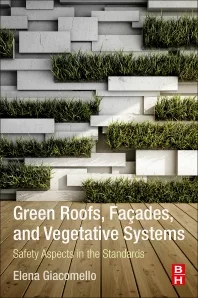Proposed Vegetative Roofing System Standard Being Developed by ASTM Roofing and Waterproofing Committee
Greater interest in vegetative, or green, roof systems brings a proposed standard on determining the proper roofing and
waterproofing membrane for a particular system.
The ongoing focus on sustainability in construction has contributed to greater interest in vegetative, or green, roof systems, in which traditional roofing material is replaced or supplemented with vegetation. A proposed new ASTM International standard will address an important aspect of designing this kind of roofing: determining the proper roofing and waterproofing membrane for a particular system. The proposed new standard, ASTM WK29304, Guide for Selection of Roofing/Waterproofing Membranes for Vegetative Roof Systems, is currently being developed by Subcommittee D08.24 on Sustainability, part of ASTM International Committee D08 on Roofing and Waterproofing.
“An effective or suitable membrane for a vegetative roof system will satisfy both the roofing and waterproofing requirements and functions for the building and also be an effective substrate that promotes the healthy growth and successful function of the vegetative roofing system,” said Michael Sexton, senior systems engineer, Firestone Building Products Co., and leader of the task group developing the proposed new standard.
According to Sexton, a suitable roofing and waterproofing membrane will resist damage to the building’s roof envelope from common conditions such as excessive roof traffic, membrane abrasion and impact, plant root penetration, ultraviolet damage, exterior fire, thermal shock and wind events. In addition, a proper membrane would comply with local, state and federal building codes and meet the industry’s test approval standards.
“The growing move towards preserving our environment and reducing the effects of the urban heat island has encouraged many building owners and communities to select vegetative roofs,” Sexton said. “As such, each and every component plays an important role in the success, not only of the roofing, but to maintain and enhance the building envelope performance. The proper selection of a waterproofing barrier for the roof is critical to the success on both fronts.”
Sexton said that all interested parties are invited to participate in the development of WK29304. He also noted that D08.24 is working closely with ASTM Committee E60 on Sustainability on topics of mutual interest for roofs.
For more information, visit www.astm.org.
The ongoing focus on sustainability in construction has contributed to greater interest in vegetative, or green, roof systems, in which traditional roofing material is replaced or supplemented with vegetation. A proposed new ASTM International standard will address an important aspect of designing this kind of roofing: determining the proper roofing and waterproofing membrane for a particular system. The proposed new standard, ASTM WK29304, Guide for Selection of Roofing/Waterproofing Membranes for Vegetative Roof Systems, is currently being developed by Subcommittee D08.24 on Sustainability, part of ASTM International Committee D08 on Roofing and Waterproofing.
“An effective or suitable membrane for a vegetative roof system will satisfy both the roofing and waterproofing requirements and functions for the building and also be an effective substrate that promotes the healthy growth and successful function of the vegetative roofing system,” said Michael Sexton, senior systems engineer, Firestone Building Products Co., and leader of the task group developing the proposed new standard.
According to Sexton, a suitable roofing and waterproofing membrane will resist damage to the building’s roof envelope from common conditions such as excessive roof traffic, membrane abrasion and impact, plant root penetration, ultraviolet damage, exterior fire, thermal shock and wind events. In addition, a proper membrane would comply with local, state and federal building codes and meet the industry’s test approval standards.
“The growing move towards preserving our environment and reducing the effects of the urban heat island has encouraged many building owners and communities to select vegetative roofs,” Sexton said. “As such, each and every component plays an important role in the success, not only of the roofing, but to maintain and enhance the building envelope performance. The proper selection of a waterproofing barrier for the roof is critical to the success on both fronts.”
Sexton said that all interested parties are invited to participate in the development of WK29304. He also noted that D08.24 is working closely with ASTM Committee E60 on Sustainability on topics of mutual interest for roofs.
For more information, visit www.astm.org.
Looking for a reprint of this article?
From high-res PDFs to custom plaques, order your copy today!



